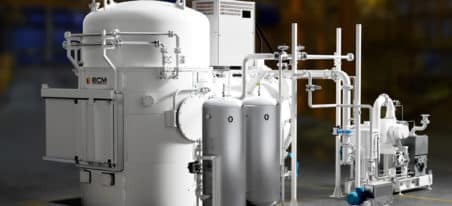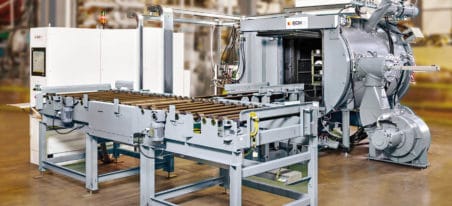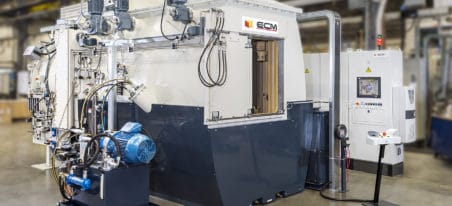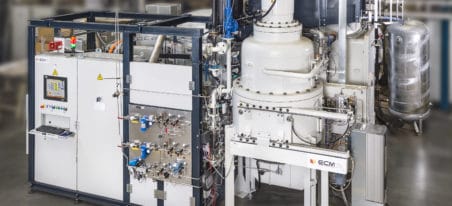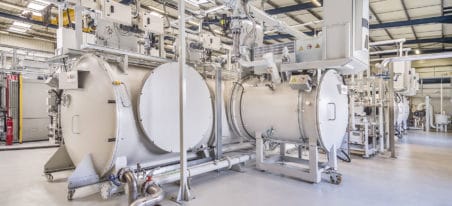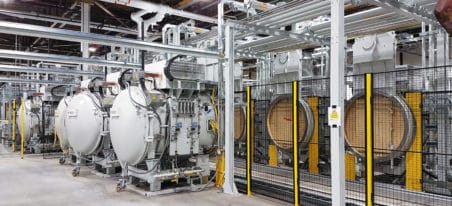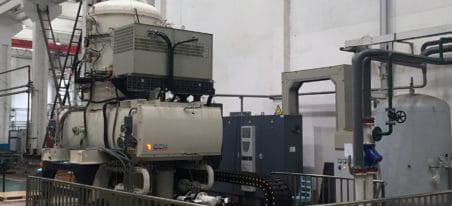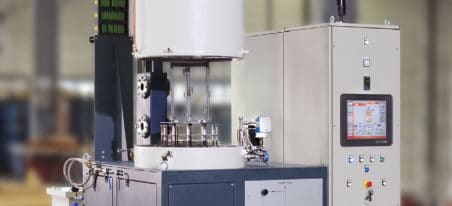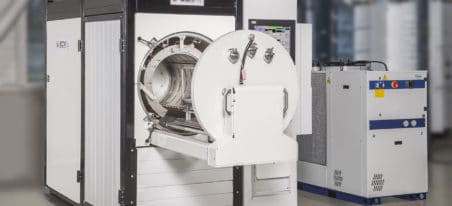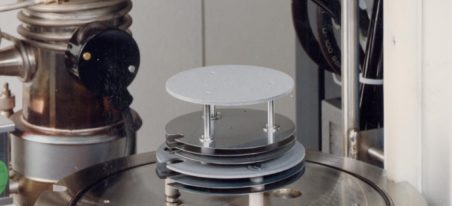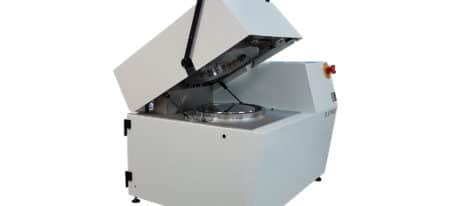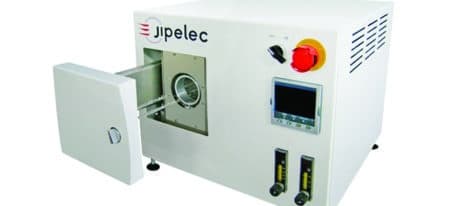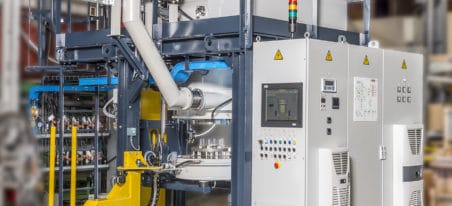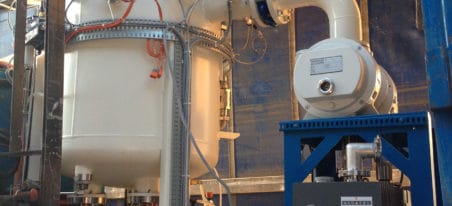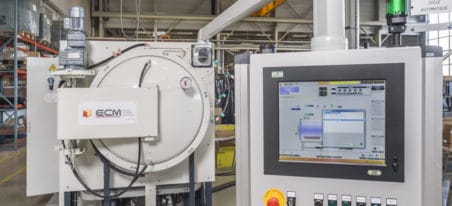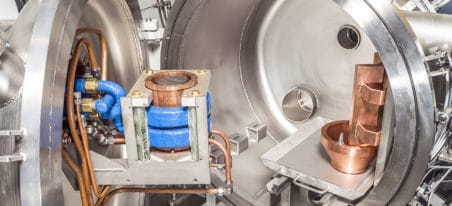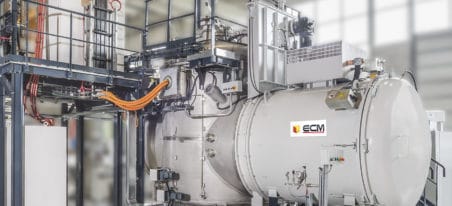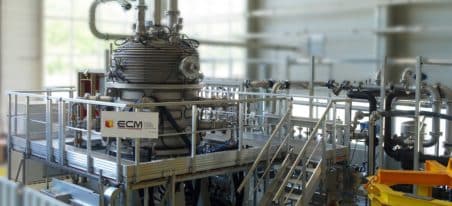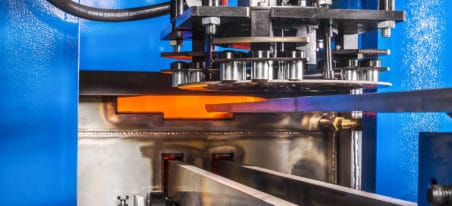The carburizing depth can also be precisely controlled; results have shown a very high degree of uniformity in batches of parts and even on one part only. Moreover, the difference in enrichment depth between the side and the bottom tooth is greater than 30% after conventional carburizing and oil quenching. After low pressure carburizing and gas quenching, it is less than 15%. This reduces the specification carburizing depth and thus the cycle time. It also helps reduce stress and toothing distortion after quenching.
There is an excellent hold to the pitting resulting from the absence of intergranular oxidation (IGO).
The ECM process makes a difference when strain or shock resistance is of importance, e.g. to increase torque in new generation gearboxes.
With perfect control of the carbon and nitrogen (if carbonitriding) enrichment, low pressure carburizing contributes to the increase of the surface compressive stresses which favor strain resistance. On our systems, low-pressure carbonitriding® and well controlled gas quenching lead to improved mechanical properties (shock and strain).
The heat treatment does not necessarily imply that the parts will not meet the dimensional tolerances. ECM’s processes, especially gas quenching, allows a better distortion control of the parts because the cooling speed after carburizing can be easily adjusted for each part shape according to specific procedures. The momentary interruption of the quenching- STEP QUENCH – is an additional tool which reduces heat stress in the material during quenching and reduces distortion.
For gas quenching, the results are very uniform, between parts and loads. Distortion is generally predictable, and its amplitude and direction more homogeneous. Therefore in some situations, they can be anticipated during processing before treatment.
At best, the expensive final treatment is unnecessary.
In general, the amount of material to be removed and the number of treatments are reduced.
Ferritic nitrocarburizing is a low-temperature thermochemical diffusion treatment designed to enhance the mechanical properties of metal parts. This heat treatment involves enriching the surface of the parts with nitrogen and carbon in a ferritic phase, without exceeding the transformation temperature of steel.
It is an innovative thermochemical process, particularly effective for improving wear, friction, and fatigue resistance while minimizing deformations.
Ferritic nitrocarburizing is based on a chemical reaction between the nitriding and fuel gases introduced into the furnace and the surface of the metal parts. The treatment temperature is between 500 and 580°C, enabling the formation of nitrided compounds and a deep diffusion zone.
Brazing is another heat treatment that can be applied by ECM equipment, and is indispensable in the processing of certain metal parts.
At ECM Technologies, the brazing technology used is vacuum or controlled atmosphere brazing, at high temperatures.
Vacuum brazing takes place in a hermetically sealed chamber where oxygen is eliminated, preventing oxidation of the parts. Heat treatment is carried out at high temperature, allowing the brazing alloys to melt and form a homogeneous bond between the metal components.
Vacuum brazing ensures excellent uniformity and high-quality results. The advantages of vacuum brazing with ECM equipment are numerous:
- Temperature uniformity
- Oxygen-free environment (ideal for parts sensitive to oxidation)
- Process control, including heating rate, duration, and cooling speed.
An essential process in powder metallurgy, sintering is offered by ECM through vacuum furnace technology, providing significant advantages in processing and results compared to belt furnaces.
Sintering involves consolidating metallic powders through the application of heat to produce a robust component. This process can be carried out in the solid or liquid phase, eliminating the need for costly finishing steps.
Using the vacuum furnaces we offer, sintering benefits from atmospheric control, overcoming the limitations of belt furnaces. Vacuum furnaces enable high-temperature processing while eliminating oxygen traces, a considerable advantage for treating alloys sensitive to oxidation.
Moreover, vacuum furnaces allow the direct integration of complementary material treatment steps, such as low-pressure carburizing, gas quenching, or oil quenching.
Integrating these steps into the process optimizes the overall treatment duration and enhances the final quality of the components.
Parts produced through additive manufacturing require post-production heat treatment to achieve optimal performance, strength, and durability.
An initial stress-relief treatment is performed to eliminate internal stresses, followed by complementary treatments such as solution heat treatment and aging. These heat treatments enhance the density and mechanical properties of the components.






